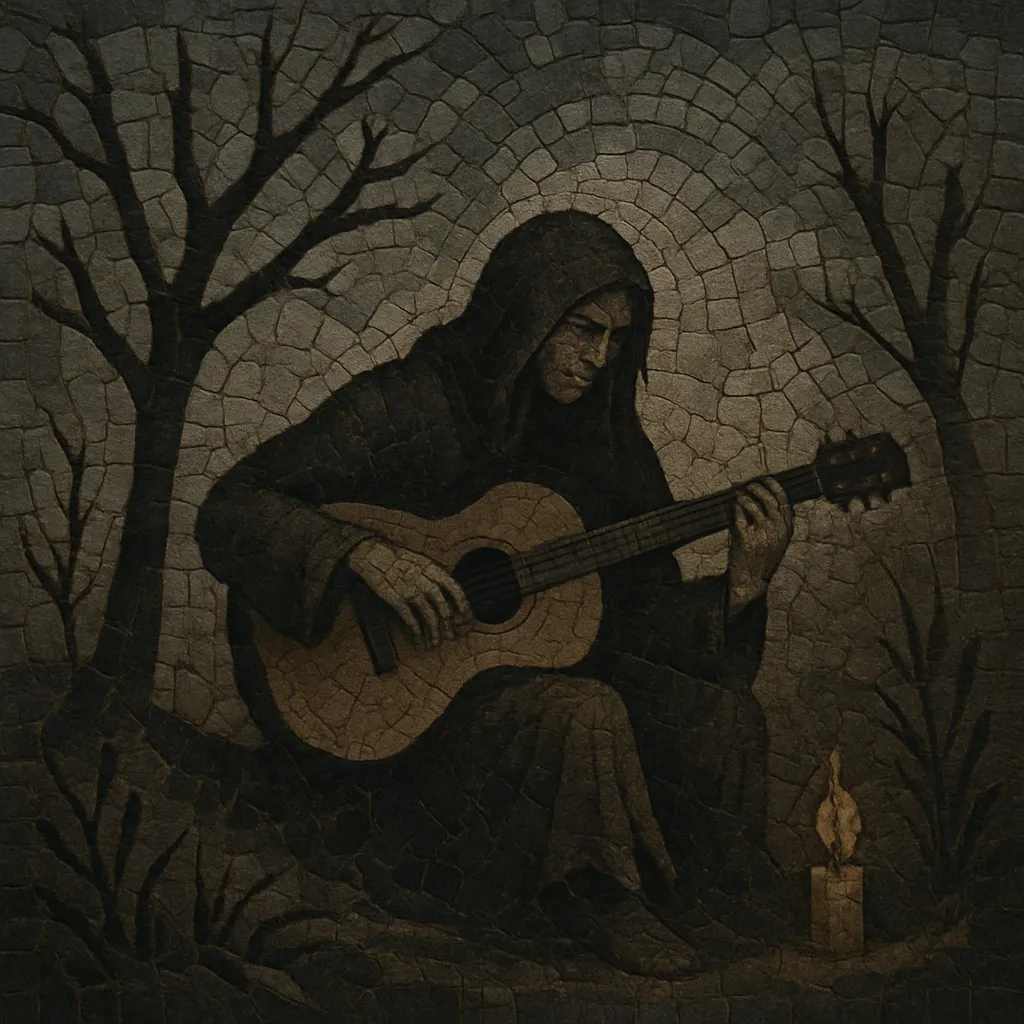Dark folk is a somber, acoustic-centered branch of folk that blends minor-key songwriting with post-industrial atmospheres and gothic aesthetics. It often favors intimate, close-mic’d vocals; fingerpicked classical or steel‑string guitars; and sparse, martial or ritual percussion.
Arrangements tend to be minimalist yet textural: drones, harmonium or accordion beds, bowed strings (violin, cello), and occasional field recordings or analog hiss deepen the mood. Lyrics explore themes of memory, decay, paganism, esotericism, romanticism, and the natural world, presented in a reflective or incantatory tone. The result is music that feels both archaic and modern—rural in timbre yet post-industrial in spirit.
Dark folk coalesced in the early-to-mid 1980s in the United Kingdom out of the post-industrial and post‑punk milieu. Artists associated with the emerging neofolk/apocalyptic folk scene—most notably Death in June, Current 93, and Sol Invictus—shifted from abrasive electronics toward stark, acoustic instrumentation while retaining ritualistic atmospheres and esoteric, literary themes. This hybrid drew on British folk traditions and psychedelic folk’s introspective edges, but framed them with the austerity and minimalism of industrial culture.
Through the 1990s the sound crystallized and spread across continental Europe. German acts such as Forseti and Darkwood, Scandinavian groups like Tenhi, and projects across Italy and France cultivated a characteristic palette: fingerpicked guitars, modal melodies (often Aeolian/Dorian), baritone or chant-like vocals, and martial percussion. Independent labels and mail‑order networks connected a transnational scene that favored limited physical releases and austere visual design.
In the 2000s and 2010s, a new wave of artists absorbed dark folk’s mood into singer‑songwriter forms, ambient textures, and even doom-tinged or gothic approaches, while longstanding projects (e.g., Of the Wand & the Moon, ROME) refined the classic template. The aesthetic bled into adjacent styles such as pagan folk, neoclassical dark wave, and martial industrial. Digital platforms broadened access, but the style retained a penchant for intimate recordings and analog warmth.
Dark folk is as much a sensibility as a set of techniques: sparse arrangements, ritual or pastoral imagery, and a reflective, sometimes fatalistic tone. While the scene’s esotericism and use of historical or mythic symbols can spark debate, many artists explicitly approach these motifs as poetic, philosophical, or folkloric material rather than political messaging.


